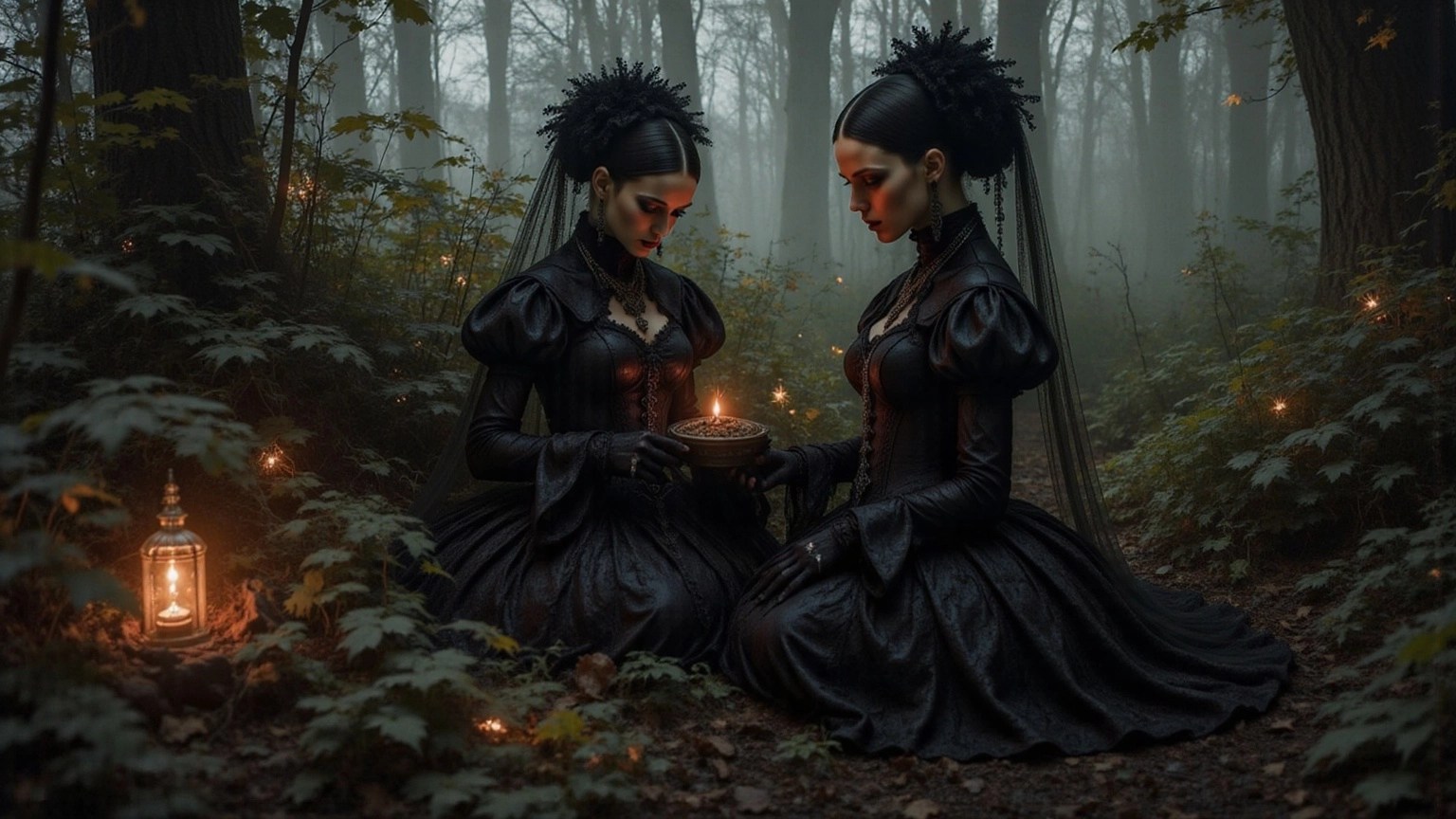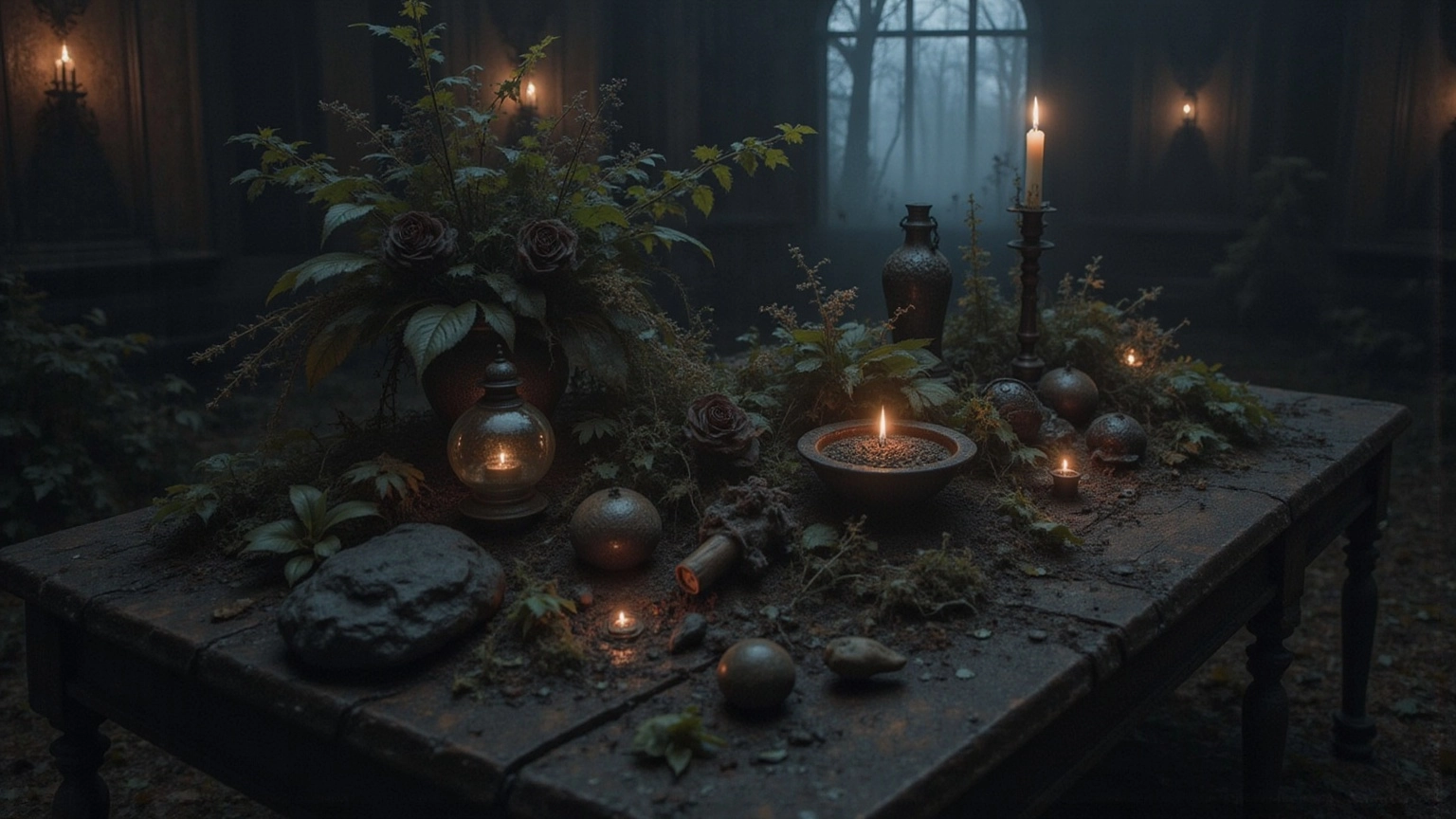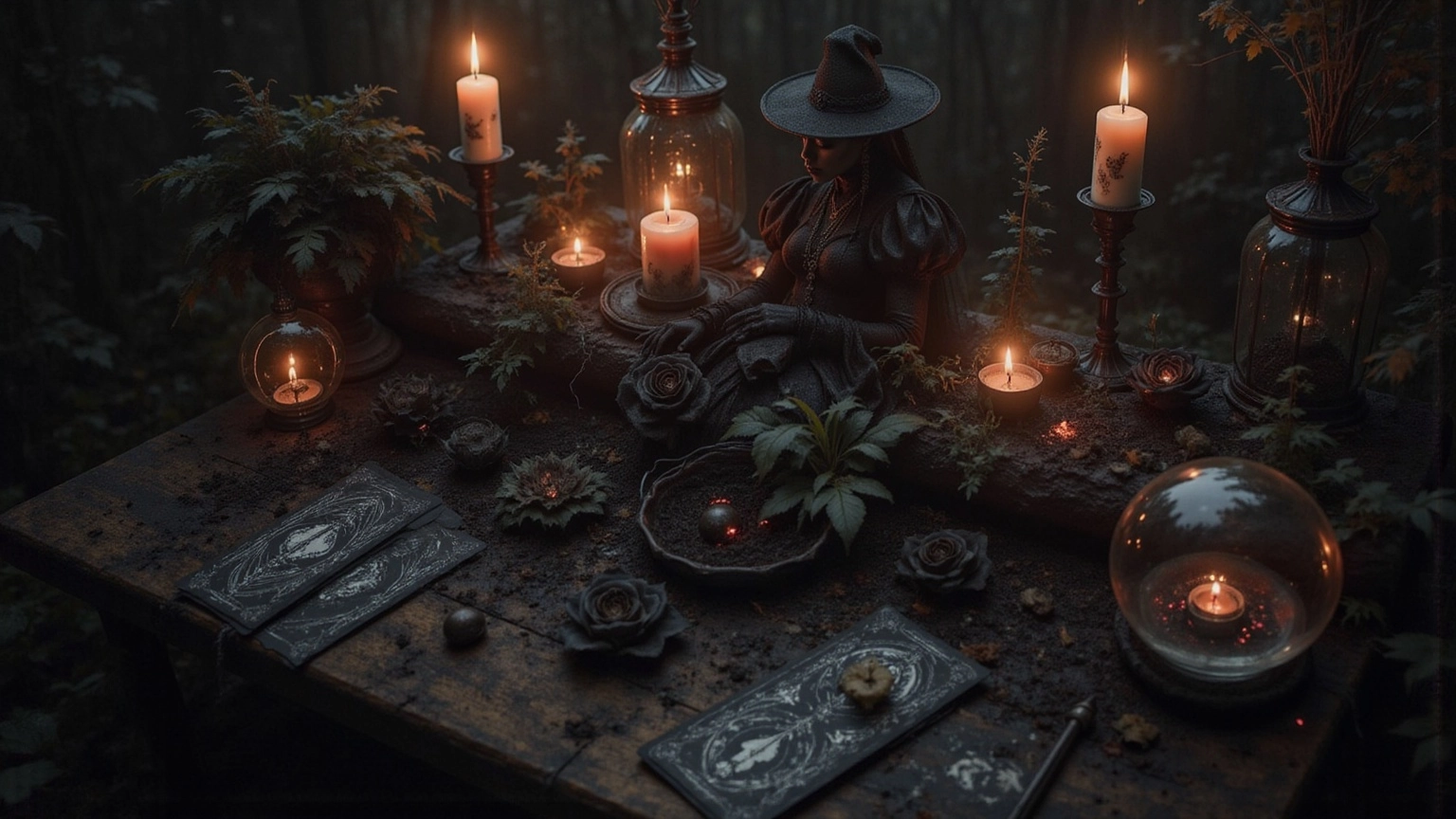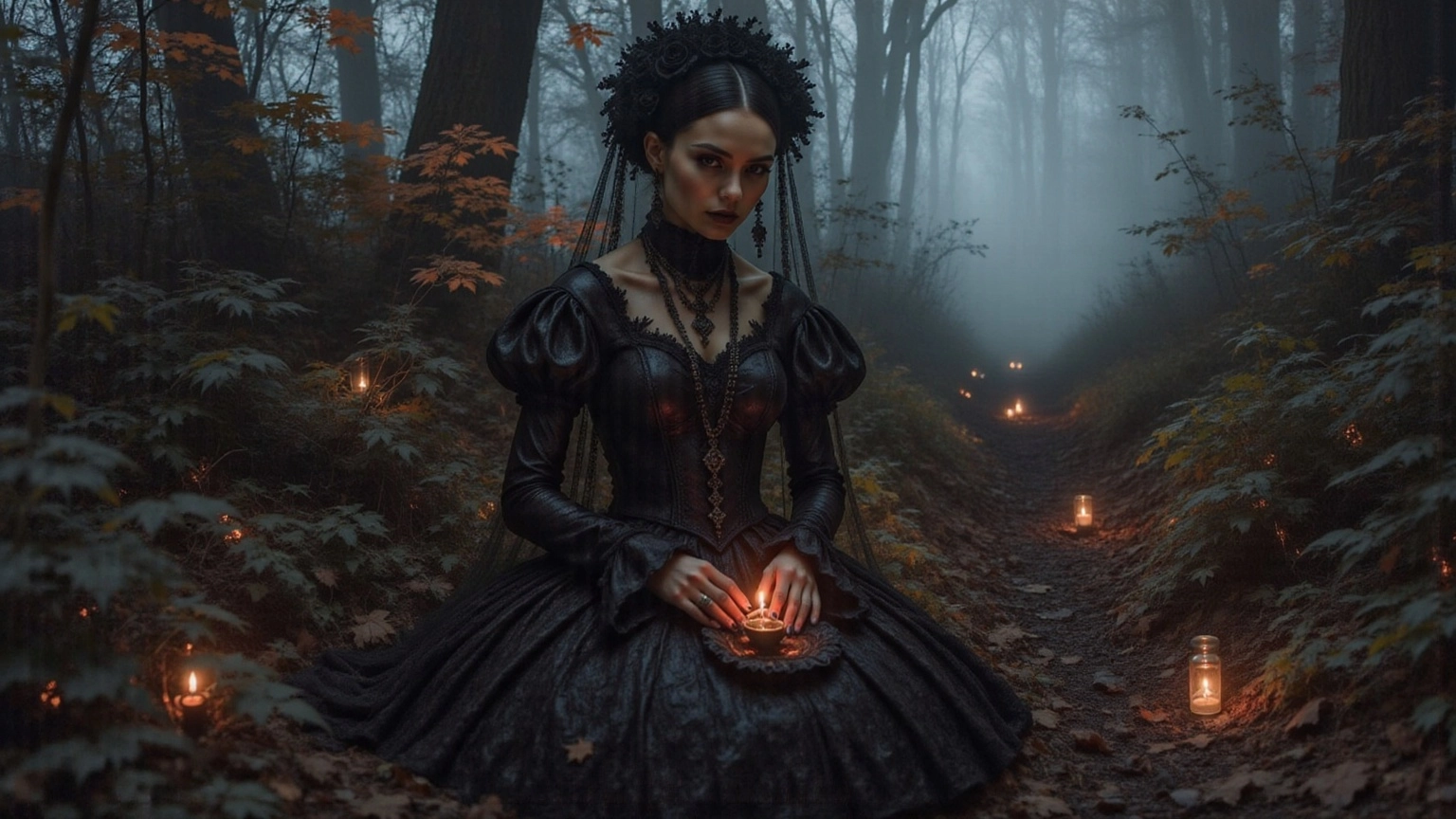
Understanding Traditional Witchcraft: Origins, Practices, and Significance
Share
Overview
Traditional witchcraft—an ancient dance with the spirits—thrives on a primal connection to nature. Rituals, herbalism, and divination pulse at its core, each element a heartbeat in the dark. But here’s the twist: these age-old practices aren’t just relics of the past; they’re staging a fierce comeback, echoing their cultural significance and allure in today’s world.
Why does this matter? Because the revival of traditional witchcraft isn’t merely a trend; it’s a rebellion against the mundane. It whispers secrets of the earth, inviting you to partake in a sensory journey that challenges the ordinary. Imagine the scent of herbs, the flicker of candlelight, the thrill of divination—each ritual a portal to a deeper understanding of existence.
So, what are you waiting for? Dive into this gothic tapestry where ancient wisdom meets modern allure. Explore the shadows, embrace the rituals, and let the revival of traditional witchcraft ignite your spirit. The world is watching—are you ready to join the dance?
Introduction
Magic weaves through the fabric of human experience. Traditional witchcraft? It stands as a testament to this enduring connection. Rooted in ancient customs and a profound respect for nature, it offers a glimpse into the rituals and beliefs that have shaped cultures across the globe.
In a world hungry for authenticity, where spiritual connection feels like a fading echo, the resurgence of these age-old practices raises a compelling question:
- How can the wisdom of traditional witchcraft illuminate contemporary life?
- How can it foster a deeper understanding of our place within the natural world?
Dive in and discover.
Defining Traditional Witchcraft: Core Concepts and Significance
Magic isn’t just a relic of the past; it’s a living, breathing force that weaves through the fabric of our existence. Traditional witchcraft embodies a gritty tapestry of methods and beliefs, harnessing the raw power of nature through rituals and spells. These practices, rooted in local customs and folklore, stand in stark contrast to the sanitized interpretations of modern culture. They demand respect, reminding us of our profound connection to the earth and the cycles that govern it—an essential thread in the fabric of cultural heritage and identity.
Did you know that around 40% of people globally still believe in magic? That’s a striking testament to its allure, especially in regions steeped in nature-focused spirituality. Here, rituals transform into communal gatherings, reinforcing cultural identity and continuity. With a dataset spanning 95 countries, representing about half of the world’s adult population, the reach of these beliefs is nothing short of staggering.
Natural elements are the lifeblood of traditional witchcraft practices. Practitioners wield herbs, stones, and organic materials like alchemists of old, channeling their inherent energies for healing and protection. This respect for nature isn’t just a nod to the past; it’s a vibrant pulse in contemporary culture, where holistic and natural wellness methods are gaining traction.
In today’s world, traditional witchcraft is far from obsolete. It’s experiencing a renaissance, especially among the younger generations drawn to alternative spiritual paths. This revival isn’t just a trend; it’s a testament to the timeless relevance of ancient beliefs and rituals, offering us a way to reconnect with the natural world and our own spirituality. Customary magic remains a crucial, vibrant element of cultural expression, a bridge linking our past with the present. So, are you ready to explore the depths of this enchanting world?

Historical Origins of Traditional Witchcraft: A Journey Through Time
Conventional sorcery? Its roots dig deep into ancient societies, entwined with spiritual customs and a fierce reverence for nature, which are key aspects of traditional witchcraft. Magic—once a sacred bridge to the divine, a key to life’s enigmas—was a powerful force. From the shamanistic rituals of indigenous tribes to the folk magic whispered in the shadows of rural Europe, the methods of traditional witchcraft were as diverse as the cultures themselves. But then came the tides of change. As structured faiths rose and society morphed, the dark specter of oppression loomed over witches. The witch hunts of the 16th and 17th centuries? They left an indelible mark, forever reshaping the perception and practice of traditional witchcraft. Dare to delve deeper into this intoxicating history?

Key Practices and Rituals in Traditional Witchcraft: An Overview
In the shadowy corners of traditional witchcraft, essential methods such as herbalism, divination, and ritual magic pulse with life. Herbalism isn’t just a practice; it’s an ancient whisper of plants wielding their healing and spiritual powers, secrets passed down through generations like treasured heirlooms. Ever peered into the depths of a crystal ball or shuffled tarot cards? Those divination methods—scrying, tarot—are more than mere games; they are gateways to the future, beckoning guidance from the unseen.
Rituals? They’re the heartbeat of existence, marking births, marriages, and deaths with a sacred intensity. Picture the symbols, the chants, the offerings—each one a thread woven into the fabric of spiritual connection. These acts transcend mere performance; they are a lifeline to the mystical, deeply rooted in the practitioners' worldview, enhancing their bond with the spiritual realm.
So, what does it mean to embrace these ancient practices? Are you ready to dive into the depths and explore the intoxicating dance between the earthly and the ethereal? The world of traditional witchcraft is waiting, enveloped in mystery and allure, inviting you to uncover its secrets.

Cultural Relevance and Modern Perceptions of Traditional Witchcraft
In recent years, classic magical practices have surged back into the spotlight, entwined with a broader yearning for holistic health and a deeper connection to nature and spirituality. People are reclaiming the craft, wielding its rich history as a weapon of empowerment, a canvas for self-expression, and a balm for healing. This modern twist? It’s all about inclusivity and personal agency—practitioners are reshaping age-old traditions to fit their vibrant lives. Traditional witchcraft has evolved from being merely a spiritual journey to becoming a cultural movement that revels in diversity and champions personal empowerment. The question is, are you ready to dive into this enchanting world?

Conclusion
Traditional witchcraft isn't just a relic of the past; it’s a vibrant pulse that connects us to the earth and the mystical forces that shape our existence. This isn’t mere nostalgia; it’s a rich tapestry of beliefs and practices that resonate powerfully in our modern lives. What if embracing these ancient traditions could empower you in your personal and spiritual journey?
As we peel back the layers, we uncover the historical roots of traditional witchcraft, stretching back to ancient societies, and its modern resurgence among seekers of holistic, nature-infused spirituality. Herbalism, divination, and ritual magic reveal a deep reverence for the natural world, echoing the cultural significance these practices hold. Communities are reclaiming these age-old rituals, igniting a sense of identity and continuity that breathes life into their modern existence.
But the allure of traditional witchcraft goes beyond individual practices; it beckons us to reflect on our cultural heritage and our connection to nature. Could embracing these traditions lead to a deeper understanding of ourselves and the universe around us? This journey fosters a profound respect for the earth and its cycles. As interest in traditional witchcraft swells, it calls us to explore the mysteries that dwell within and around us, championing a holistic approach to spirituality that is unapologetically empowering and transformative.
Frequently Asked Questions
What is traditional witchcraft?
Traditional witchcraft is a practice that embodies a combination of methods and beliefs, utilizing the raw power of nature through rituals and spells, deeply rooted in local customs and folklore.
How does traditional witchcraft differ from modern interpretations of magic?
Traditional witchcraft contrasts with modern interpretations by emphasizing respect for nature and cultural heritage, rather than the sanitized versions often seen in contemporary culture.
What role do rituals play in traditional witchcraft?
Rituals in traditional witchcraft serve as communal gatherings that reinforce cultural identity and continuity, highlighting the connection to nature and ancient beliefs.
What percentage of people globally believe in magic?
Approximately 40% of people worldwide still believe in magic, particularly in regions with a strong focus on nature-oriented spirituality.
What natural elements are commonly used in traditional witchcraft?
Practitioners of traditional witchcraft commonly use herbs, stones, and organic materials to channel their inherent energies for purposes such as healing and protection.
Is traditional witchcraft still relevant today?
Yes, traditional witchcraft is experiencing a renaissance, particularly among younger generations seeking alternative spiritual paths, demonstrating its timeless relevance and cultural significance.
How does traditional witchcraft connect to contemporary culture?
Traditional witchcraft connects to contemporary culture through the growing popularity of holistic and natural wellness methods, reflecting a vibrant pulse of respect for nature and spirituality.
